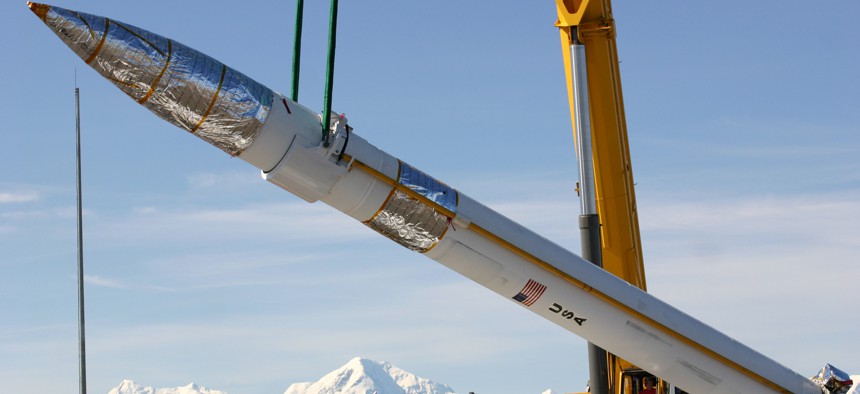
DoD
Pentagon Picks Lockheed, Northrop-Raytheon Team to Develop Missile Interceptors
Officials reject a bid by Boeing, which builds the current generation of missile interceptors.
The Pentagon has chosen Lockheed Martin and a Northrop Grumman-Raytheon Technologies team to develop a new generation of interceptors to protect the United States from long-range missile attacks.
The announcement comes just days after North Korea reportedly fired missiles in response to U.S. and South Korean military exercises. The companies selected by the Pentagon Tuesday will now compete against one another; a winner is expected to be chosen to build up to 20 the Next Generation Interceptors in the mid-2020s.
“Today’s awards are an important step in modernizing our Missile Defense System,” Stacy Cummings, a senior Pentagon official who is performing the duties of undersecretary of defense for acquisition and sustainment, said in a statement. “NGI plays an important role in our homeland defense, and our acquisition strategy is ensuring the department maximizes innovation to keep pace with rapidly advancing threats.”
Lockheed said in a statement that its winning bid used technology from its THAAD battlefield missile interceptors.
In an emailed statement, Scott Lehr, Northrop Grumman vice president and general manager, launch and missile defense, said: “There is a critical timeline for fielding this capability and our team brings together the industry’s top missile defense talent, agile design and manufacturing practices, and state-of-the-art operational factories to support the MDA and our nation’s defense against these evolving threats.”
The Missile Defense Agency’s decision comes as a major blow to Boeing, which is the lead contractor on the current generation of Ground-Based Midcourse Defense missile interceptors based in Alaska and California. The company said in a statement that it was “disappointed the U.S. Missile Defense Agency did not advance our team to the next phase of competition.”
Boeing could contest the decision, which customarily freezes the work being done by the chosen companies.
“While it is premature to comment on next steps until we participate in the formal debrief session, it is important to note that today’s announcement does not impact our commitment to the MDA and to the mission of the [existing] GMD system,” the company said.
In 2019, Boeing dropped out of a competition to replace the Air Force’s Minuteman III intercontinental ballistic missiles with new nuclear-tipped ICBMs. The company said Northrop Grumman’s acquisition of rocket maker Orbital ATK tilted the competition in Northrop’s favor. That paved the way for Northrop to capture the $85 billion deal.
The new interceptor “is an advanced interceptor designed to protect the nation against intercontinental ballistic missile attack,” the Pentagon said.
The new interceptors are being built to primarily counter North Korean and Iranian missiles. They are intended to be better than current interceptors at telling incoming warheads from decoys.
“The decision to pursue step-function capability improvement is a reflection of the growing rogue state missile threat,” Tom Karako, a missile defense expert with the Center for Strategic and International Studies, said. “It’s a reasonable decision, but it will unfortunately require accepting greater risk in the near term. It also requires a strategy to get from here to there, which at minimum should include capability improvements and life extension efforts to today’s GBIs, and the broader GMD enterprise.”
Despite the loss, Boeing’s existing interceptors “will be with us for a long time to come, and will need to evolve in tandem, as a bridge to the future,” Karako said.
“Our dedicated employees and partners will continue to manage the current system, and continually explore ways to support the warfighter in an evolving threat environment,” Boeing said.







